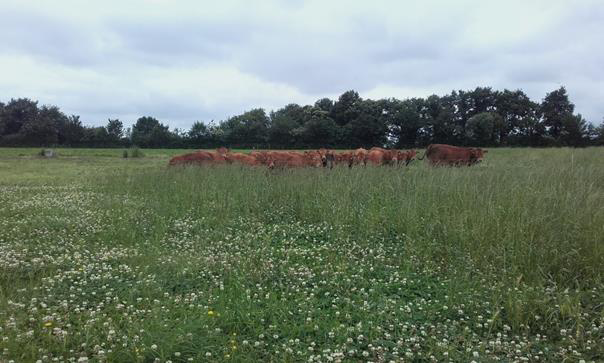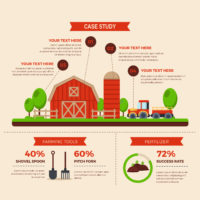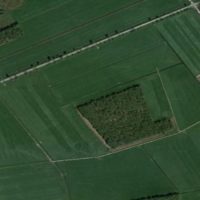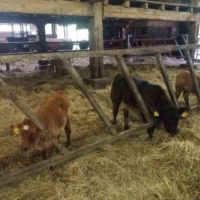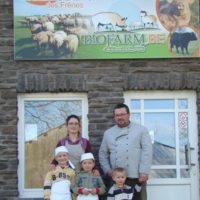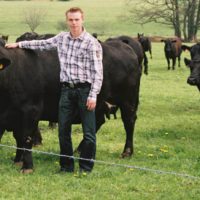A sustainable and high-performing system on a living soil
Description
Frederic Barreau settled in the farm in 1983 with a sheep unit, label broilers and 20 suckler cows (rearing and fattening system). Since 1983, suckler herd has gradually increased to achieve 64 cows. Farmer has also gradually improved the genetics of the Limousin herd.
He has changed crop system by substituting italian ryegrass and maize silage by multispecies grasslands.
First of all, better grasslands have been oversown and since 2008, grasslands are sown under triticale cover crop and he has stopped tillage to enhance soil capacity.
The farmer aims to optimise forage area and make feeding costs decrease. He has adapted his herd management to fit animal needs to seasonal variations in forage supply. He has implemented a grazing management in strip-stocking, cows have a daily grass supply. Compact autumn calving allows a growth of calves based on gra-zed grass as early as February. During summer when grass production is low, cows are dried-off.
Living soil conservation and grassland yield help to achieve good economic efficiency. Grazing management fits forage quality supply to feed needs.
Reason for the innovation
An intensive, efficient and sustainable management
Adapting herd management to forage supply to achieve good livestock performances and to limit farm inputs.
Farm description
Environment
This plain farm is located in western France, in the department of Vendee. The climate is temperate oceanic with a summer drought from June to September. Main sandy soils have a low capability.
Grassland management
- Long grazing period : from February to December
- Grazing management type: strip-stocking with a water buried network
- Lengthening the grazing season by carrying out standing grass stocks
Structure
- Annual Work Unit: 1
- Agricultural Area: 69 ha UAA
- Herd: 64 Limousin cows – 130 LU
- Forage area :
- 21 ha temporary grasslands
- 39 ha permanent grasslands
- Stocking rate: 2,2 LU/ha main forage area
Animal performance
- Average carcass weight:
- 450 kg fattening bull
- 430 kg fattening heifer
- Calving interval: 387 days
Why it is working
A gradual implementation, step by step, considering work load and good economic results
A quest of coherence between animal and forage performances
Good practices and rigour in management
Farmer’s state of mind: openness and exchanges
Farmer has made soil constraint become strength of the system.
Additional information
| Farming system | conventional farming |
|---|---|
| Domains of innovation | farm system, grazing management system |
| Main types of animal | beef cattle |
| Country | France |
| Product type | Farmer portrait |
| Language | English, French |
